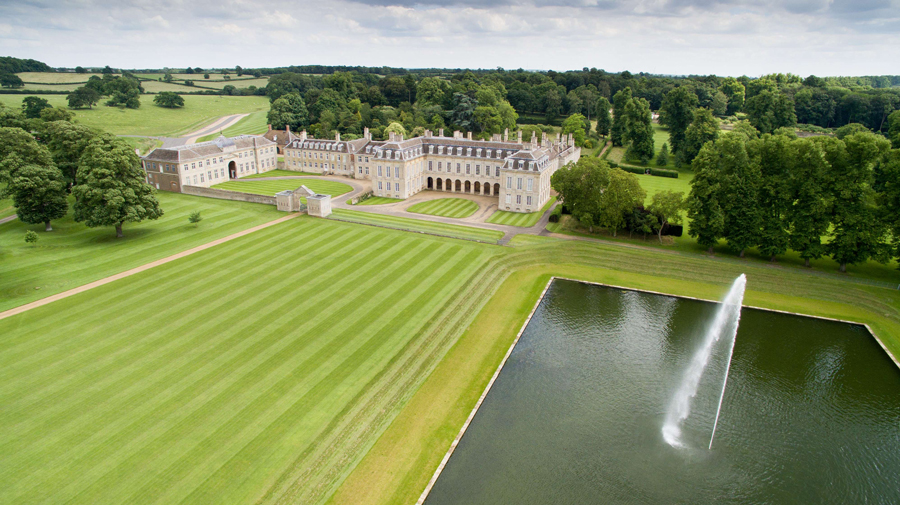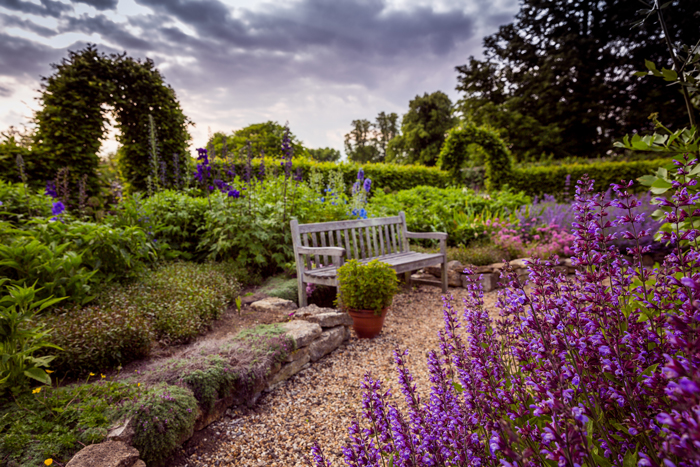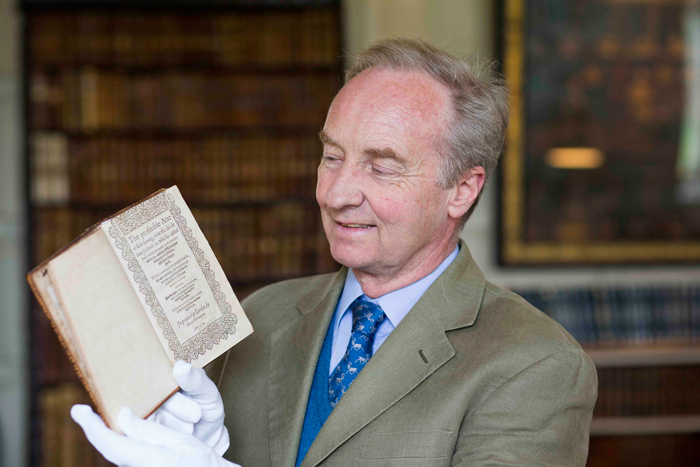‘Vistas of vast extension’ exhibition planned for Boughton House
The UK is home to many celebrated and remarkable gardens and the one at Boughton House in Northamptonshire is no exception. The house is one of Britain’s grandest and best-preserved stately homes set in a magnificent 18th century landscape garden and woodlands.
Spreading out over 100 acres of intricately designed landscape, with more than a mile of canals and over 30 miles of avenues, the history of this beautiful garden and landscape will be celebrated in a special exhibition opening in August 2017.
The creation of Ralph, 1st Duke of Montagu and his son John, the title of the exhibition – ‘Vistas of vast extension‘ – was the phrase used by one of their amazed 18th century contemporaries, the antiquarian explorer of Stonehenge, William Stukeley.
Today, it is the home of the 10th Duke of Buccleuch who carries on the work of his ancestors to complete a huge project of restoration. The magnificent garden could have been lost after 1749 when the great House and its Estate passed to families with other substantial properties. Boughton was no longer a family home and nature reclaimed the terraces and waterways silted. For more than 200 years the huge formal gardens were almost lost.
The passion of recent generations has seen major restoration of the parkland, with hundreds of avenue trees (including a mile of limes) being replanted. The waterways have been restored, a new Sensory Garden created and projects started to reflect the 21st century.
The special exhibition this August (2017) will capture some of the thinking behind the garden’s creation and early aspects of the English love of gardening and plants. The exhibition will include a fascinating array of objects drawn from the renowned Buccleuch Art Collection to help illustrate the practicalities of such an undertaking while also reminding visitors of how the love of gardening has inspired artists, musicians and writers over centuries.
Visitors will be able to see ravishingly beautiful Chelsea and Derby porcelain with painted floral decoration from the 1750s and 1790s sitting alongside the leather bound volumes of colour prints from which the artists took their designs.
Throughout the exhibition, delicately painted watercolour plans and maps will illustrate the changing taste in gardens, from the European inspired formal parterres with their stone basins, statues and fountains, to the simple, more direct relationship with the natural landscape that came to characterize the English garden.
For the present Duke (pictured above) part of the fascination rests in the nuts and bolts of how his forebears set about their garden creations. He explains: “Today, we think that the craze for books and television programmes on gardening is something new, but four hundred years ago Thomas Hill’s ‘Profitable Art of Gardening’ was answering just the same demand for practical knowledge from people like my ancestor Edward Montagu“.
The Profitable Art of Gardening will be on display having lain in quiet obscurity on the library shelves at Boughton. Published in 1574 it is a helpful manual on everything from how to cultivate bee populations essential for better pollination to laying out mazes and when to water.
The exhibition will also include quirky objects like the bulky leather shoes worn by the pony that pulled the lawnmowers to prevent the hooves from marking grass as well as the latest high tech GPS satellite guided mower now being introduced.
Exhibition curator, Paul Boucher, explains that Boughton is the perfect setting as the house offers wonderful spaces for such an exhibition: “Its cavernous Unfinished Wing is able to embrace the 1745 summerhouse with its Chinese dragon decorations and the stately garden benches delivered by George Nix in 1728,while delicate manuscripts and drawings can be sensitively displayed and illuminated in museum cabinets,” he says.
Above all, Paul points out, the visitor will be able to step from studying the stories and plans from centuries past directly into Boughton’s huge gardens and imagine for themselves why contemporaries like Daniel Defoe wrote that, even in Italy, he had never seen the like.
Boughton will also be hosting a special photography exhibition, ‘A Gardener’s Labyrinth‘ by the acclaimed photographer, Tessa Traeger. Commissioned by the National Portrait Gallery to photograph important British horticulturalists for its collection and first shown there in 2003, it includes over 30 sitters working in the field. Subjects include gardeners, garden history writers, plant finders, garden designers and artists who have helped shape new attitudes to plants and gardens in recent decades.
Charles Lister, property manager at Boughton House, points out that the exhibition adds a very special dimension to a visit to the house this year. Visitors who are familiar with Boughton will find specialist pieces moved into a new setting and mingling them with very different objects, some being seen for the first time, enabling us to take a fresh look at the story of these great gardens.
“Whether you are a green fingered expert or an amateur enthusiast there will be something to catch your attention and, as always, during the annual opening season there is an opportunity to make a day of it and explore what else Boughton has in store, and to take in some of the vast vistas that surround the house,” says Charles.
An early viewing of the exhibitions will be available to visitors to this summer’s two-day Garden Literary Festival on Saturday 1st and Sunday 2nd July. Advance booking which is essential can be done on line at: www.gardenmuseum.org.uk/page/book-tickets-for-the-2017-literary-festival
The House displays a staggering collection of art including paintings by El Greco, Gainsborough and Van Dyck, the highest quality furniture, porcelain, weapons and textiles.
Boughton House and Gardens will open throughout August. ‘A Gardener’s Labyrinth’ will open for limited periods. Please see the website for details of opening times, tours and general information.
http://www.boughtonhouse.co.uk/
All photographs ©Boughton House.





